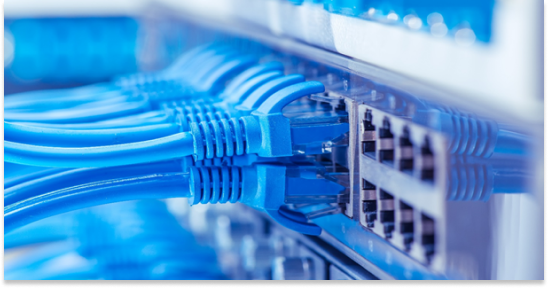Welcome To Evdo Wireless Internet!
Welcome to the brand new Evdo DepotUSA blog! Here you’ll learn all about EVDO wireless internet, what it is, how it works, the benefits, comparing to satellite internet and what it means to you. Not to mention a bit of fun along the way. Fun, you say? How could anything EVDO-related possibly be fun? Read on, McDuff.
What is Evdo Wireless Internet?
Nobody can agree on precisely what that acronym means, for starters. One side insists “Evolution, Data Only” others say it means, “Evolution, Data Optimized” is the real definition. We believe “Evolutionary Data Offering” is correct. No matter. Either way, EVDO means speed; simply put, it’s a protocol for high-speed wireless broadband working off the CDMA standard. GSM, the other standard that is wildly used worldwide.
An EVDO wireless device located at your address or location transmits and receives radio frequency to and from a local cellular tower that is connected to a remote AAA server connected to the World Wide Web. This enables your desktop, laptop or wireless device to connect to the internet.
Yes, the device does create a wireless hotspot independently or you can add a wireless router to create a hotspot. So, the process itself is absolutely revolutionary! Imagine that – we’re talking serious portability here. You can use the device anywhere within the Coverage Map areas instead of being locked in a room in your house or office.
Unlimited EVDO Wireless and Satellite Internet
EVDO Wireless(www.evdodepotusa.com) works off your local cell phone tower located about 1-2 miles from your location within the Coverage Map, while satellite internet technology takes a total of 46,000 miles just to connect to the World Wide Web Server located on Earth and another 46,000 miles to deliver the data packets back to your laptop, desktop or wireless device. Can you imagine the data loss, lag-time, and the interruption caused by clouds, rain, and snow? If you’re looking to just send and receive emails, satellite works. An EVDO wireless system, on the other hand, means immense upload/download and video streaming speed gains.
How can you get your paws on an EVDO Wireless system? Easy, Just visit one of the few sites that offer the unlimited wireless plans(x-broadband.com or evdodepotusa.com).
Unlimited Evdo Wireless Benefits
Hmmm, yes, you can experience extreme high-speed wireless connectivity from Evdo DepotUSA. The device and technology provide you benefits such as online gaming on your PS3 or Xbox 360, streaming a 2-hour movie in real-time or connecting to your corporate VPN(virtual private network) from your home. Could satellite internet perform such a task considering the lag-time and data packet loss; not to mention the bandwidth capping? You can now make lag-time a thing of the past or at least minimize it.
Lag? What could that be? For a gamer, lag means you just croaked with no idea how it happened.
You are all ready for a serious kill. Your superbly-powerful elf has a wizard in his sights. Your elf takes a shot then steps behind a tree for safety. Satisfied, you sit back and reach for a beer.
Not so fast, Jackson! What do you see next? That dreaded “you just lost a life” screen. How on earth? You saw the elf take a shot and step to safety. Unfortunately, when you clicked your button, the signal simply didn’t get to where it needed to be fast enough – this is lag. Instead, a 5-year-old in Daddy’s lap shot your butt as you were simply standing in the open!
You didn’t know that EVDO Wireless could save your life, did you? Next week we’ll discuss a specific game or two. If you would like to hear about a certain game, please post on the blog.
EVDO Wireless is the ultimate game-changer in the remote rural markets when you need to stream video and engage online gaming.
Related Definitions Of Interest:
What is CDMA Standard?
CDMA stands for Code Division Multiple Access which refers to a family of 3G mobile technology standards which use CDMA and TDMA (time division multiple access) channel access to send voice, data for the transmission and reception between mobile phone and cell towers. TDMA maximizes the user’s throughput as well as the system’s throughput in terms of Mbps/Kbps. CDMA was developed by Qualcomm an American company.
What is GSM Standard?
GSM stands “Global System for mobile communication” developed by the European Telecommunication Standards Institute. All mobile phones on this network use a SIM card (Subscriber Identity Module), while those on CDMA do not. Most GSM network operates on the 2G and 3G network. It provides roaming capabilities that CDMA does not.
Contrast between GSM and CDMA
One standard does not work on the other’s network. You can’t use a Verizon phone on an AT&T network and vice versa. The following wireless carriers use the CDMA technology: U.S. Cellular, Cricket, MetroPCS, Sprint wireless, and Verizon. T-Mobile and AT&T use the GSM standard. So, the United States is mostly CDMA and the rest of the world is GSM.
GSM standard gives the customer more control over which carrier they decide to use because the end-user information is stored on a chip which the customer can take to any carrier in the GSM family to get a new service. Whereas in the CDMA family, the carrier has all of the control, you can’t switch carriers without their providers’ consent.
What is Satellite Internet? And How Does It Work?
Like satellite TV, satellite internet uses a physical satellite located 23,000 miles into space to transmit a single or multiple strings of data which is then retransmitted another 23,000 miles back to earth to gather the information. Upon gathering the data packets from a server, the packets are uplinked another 23,000 miles to the satellite in space which will then transmit back to your satellite dish on Earth. The drawback with the system includes lag-time which is not conducive for online gaming and video streaming, plus cloudy, rainy or snowy days that can completely interrupt your service.
What is Packet data loss?
First, let’s define a Packet. A packet is a small amount of computer data sent over a computer network. Whenever you receive data from the network, it comes in small packets with each packet containing the address of origin and final destination. Packet-switching is the process of sending and receiving packets from and to numerous destinations on the same network. The network is responsible for routing the packets to the right destination in a matter of seconds.
What is a Virtual Private Network?
This is basically a private network that can be extended to the internet on a public network securely. It is the most secure way that a remote office or a telecommuter can access their corporate internal network.



